June 21, 2024
Hello, City

During the pandemic, when nobody knew what was what, we’d stopped riding transit, and took over the empty streets of downtown on our bicycles, taking the St. George/Beverly bike lanes down to Queen, and then down Peter toward the waterfront, a mostly breezy journey except for the hill above Front Street where we’d cross over the railway tracks and around the Sky Dome, and then we’d arrive at the big plaza, where people never were, and we were able to ride on the sidewalks because no one else was using them, and that was pretty fun, even though nothing else was. And because we’d never cycled downtown before, I didn’t properly realize that it wasn’t always like this, that Peter Street was usually bananas, that my kids wouldn’t ordinarily be able to ride on the sidewalks as they pedal furiously to get up the hill, that the Sky Dome wasn’t actually a no man’s land. In the summer of 2022, when my kids were out of town, my husband and I rode our bikes all the way out to Woodbine Beach and back again, and needed to stop for a break at the Sky Dome before we’d hauled our bikes up the hill and over the bridge, and a Blue Jays game had just ended. People were everywhere, in their caps and their jerseys, and there was so much joy, and it was the first time in literally years that I’d found myself in a crowded space and not felt threatened. Remember, this was 2022, just post “Freedom” convoy, their clown cars and pick-up trucks still parading through the city, mean-spirited with loud honks and screaming slogans. Our city did not endure the siege that Ottawa did, but I still carry stress and fear from that time (and I have some ideas about where you might stick your hockey-stick flagpole). But that afternoon in the plaza behind that Sky Dome, the vibe was good, and it felt great to be part of the city again.
And now, almost 2 years later, those empty streets seem almost impossible to fathom, I’m back to riding public transit with ease, and the public transit vibe has returned to something resembling normal too after a scary period of violent incidents. Twice in the past week, I’ve found myself aboard a subway train crowded with Blue Jays fans—people of all ages, races, genders—and it’s been the nicest thing, a reminder of how far we’ve come. And while Toronto certainly has its challenges—don’t try driving anywhere; and a decade and a half of terrible mayors hasn’t helped—it just feels so good to be here, for this to be home. Vibrant streets and busy restaurants and gorgeous parks and winding trails and BIKE LANES and verduous trees and museums and theatres and bookstores and farmer’s markets and beaches, and people, so many people, all of us complicit in this same city project, and—especially after a hard few years—I’m just so happy to be part of it.
January 30, 2023
Keep Riding the Streetcar

To live in a city at all is to sign up for a complicated project.
I think that living anywhere among others is a complicated project, but in a city there are no grounds to believe otherwise, no opportunity to bury one’s head in the sand about how difficult (and worth striving for) is a functioning society.
Bad things happen everywhere, they really do, and the only difference is that, in a city, when they happen, nobody says that they never thought a thing like that could happen in a place like this.
Which, of course, doesn’t make it any easier when bad things happen, except maybe a little bit, that I’ll never get quoted on a local newscast spouting that cliche.
But otherwise, it’s hard. It’s hard when scary and violent things occur in your little world, no matter where that little world is. My daughter takes public transit to school every day. I take transit almost everywhere that I don’t walk to. Transit is what makes a city work, it isn’t a city without it, and I’ve so had enough of Brenda from Whitby in the Comments explaining why she doesn’t take the TTC anymore because of escalating crime—but maybe it’s also because she lives an hour away and has no idea what she’s talking about?
The rest of us, however, don’t have a choice in the matter, and even if we did, we might take transit anyway, because if you take transit often you already know that most of the time it’s fine. That millions of people ride transit everyday without incident, and I’m not saying the system could not use improvements, but it certainly doesn’t need riders abandoning it in droves.
I keep thinking about those awful trucks one year ago that shut down our nation’s capital, the violence, the noise, the fury, the anger, and how, in some ways, the increased more explicit violence we’re seeing everywhere is part of that same spectrum, people empowered by rage and delusion, stoking fear and division.
I’ll keep riding the streetcar. Not just because I have to, but because it’s also the answer, the way it connects us all, to everywhere and everything, makes it impossible to imagine that answers to the challenges before us are ever easy or obvious.
February 25, 2022
Signs of Hope
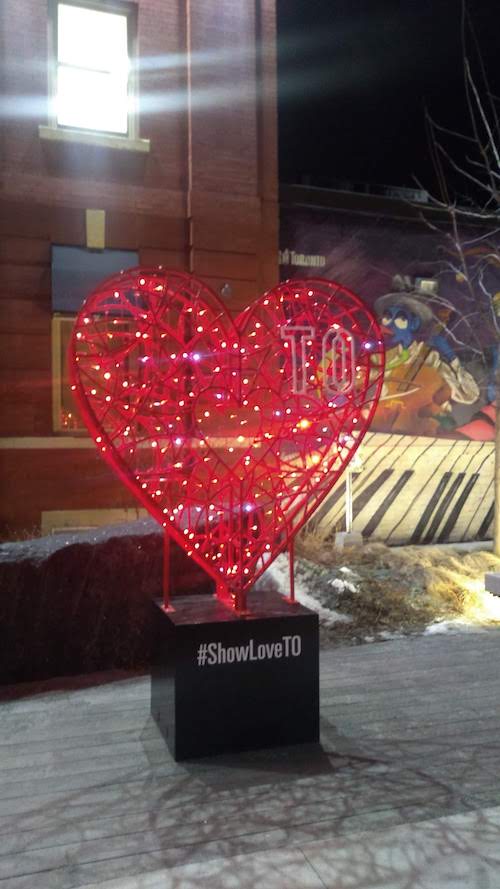
I am devastated by Russia’s invasion of Ukraine, by the toppling of our world order, and while my mental health is reeling, I am buoyed by how people all over the world, leaders and ordinary citizens, particularly within Russia itself, are standing in defiance of violence and tyranny, standing FOR democracy and freedom (which in this case actually means something, for once). We are all we have, and it’s so very precious, and it’s everything. Desperate for signs of hope tonight, I found this one newly installed on Brunswick south of Bloor, and it meant a lot to me. Sending love to wherever you are. And let’s abolish nuclear weapons so nobody else ever has to be this afraid again.
More:
- On Saturday February 26, I’m walking 5km to raise funds for my neighbours at the Fort York Food Bank as part of the Coldest Night of the Year fundraiser—it’s not too late to contribute if you’re able. You can donate here, and thank you!
- Did you know that I’m one of the jurors for the 2022 Kobzar Book Awards, which celebrates excellent books with a tangible connection to Ukrainian-Canadian culture? Learn more about the shortlist. The award will be presented on March 24.
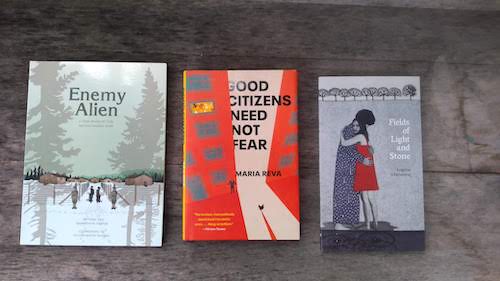
February 12, 2021
A Black Man’s Toronto

Something I have noticed with Black History Month this year is how Black History is all around, from plaques for Albert Jackson, Toronto’s first Black postman, who lived in my neighbourhood, and Olympian Sam Richardson, who attended the high school down the street, to the streetcar rolling by displaying photos of Black Canadians like Lincoln Alexander and Jean Augustine.
Last weekend after I learned that a nearby skating rink was named for Harry R. Gairey, a Black community leader, and he’d published a book, I was lucky to find a weathered library copy. An oral history, transcribed and edited by Donna Hill, mother of writer Lawrence, A Black Man’s Toronto was published by the Multicultural History Society of Ontario in 1981.
A few years ago, Kamal Al-Solaylee wrote a piece in Canadian Notes & Queries about the whiteness of nostalgia, our fondness for heritage photos that usually omit the multicultural histories of our cities. How easy it might be to suppose that Black people and Brown people haven’t always been part of the history of these places too.
And how our sense of the places we live is enriched by knowing all parts of the history. I know the streets and buildings Gairey writes about in his story, all the churches in Toronto, the school his son attended, the downtown neighbourhood he and his wife lived in before he moved out to Scarborough in the 1970s. The West Indian Club on College Street that burned down in 1968— I would never have known, but for this book. Walked by the place yesterday and felt its ghost.
Gairey was a union leader, became a civil rights activist, and a leader and supporter of Black and other immigrants to the city. He helped to challenge Canada’s racist immigration laws and brought forth Toronto’s first anti-discrimination laws after his son was prohibited from entering a skating rink.
His history is Toronto’s history and I am so glad to know it.
August 27, 2020
Island Days

I didn’t move to Toronto until I was 19 years old, but there are parts of the city I’ve known all my life. My grandparents lived at Dundas and Greenwood, where my dad had grown up, and so I knew the park and the pool, the side street where we’d park with its NO BALL PLAYING signs. I know Simpsons, where we’d go to visit Santa at Christmas. The Skydome for baseball games, and the Exhibition Stadium before it. I knew Kew Gardens and the Beaches, and then as I got older, Queen Street became part of my personal geography too, my friends and I being driven downtown on the weekends to buy vintage jeans at the Black Market, buy chocolate chip cookies at the Second Cup on John Street, and peer in the windows at Much Music.
The Toronto Islands have always been a part of that geography though. It was an important place for my grandparents, and they took me there—I remember the extravagance of the ride-all-day wristband they bought me for the Centreville Amusement Park, which cost an entire $13. Another time we met our grandparents there after travelling to the islands in our boat, which we’d launched at Scarborough Bluffs, I think. It only happened once, as far as I can recall, but boating around the Toronto Island Lagoons was one of the most memorable experiences of my young life.
In university, I didn’t have much to do with the islands (apart from the obligatory boat cruise during frosh week) until my fourth year when I got a bike. Heading to the Hanlan’s Point nude beach that summer with two friends who were willing to indulge me, an experience that changed the way I see myself and my body forever. Another time that summer I ran away to the Island all by myself and nobody knew where I was, and there I sat on the beach with a copy of A Room of One’s Own, which I still have, and written on the inside cover is my name, and underneath in parentheses, “who is happy,” with the date, August 4 2001.
So many things about the island have stayed the same, apart from the cost of the wristband, and the way the beaches have shrunk due to erosion and encroaching water levels. Sometimes, loving the island brings profound sadness, at the inevitability of the land slipping away, of climate change and ever-change. But somethings seems eternal too about the place, its draw, being herded onto its iconic ferries.
Stuart and I went to the island on his first visit to to Toronto in 2003, and we got terrifically sunburned. It was the place we brought visitors to once we’d moved to the city ourselves. I celebrated my birthday on Ward’s Island in 2006 or 2007—friends waited in line for hours at the ferry docks because I didn’t have a cellphone then so they couldn’t call to cancel. We used to ride our bikes there, even though the uphill journey home at the end of an island day is the most exhausting trip in the world. We celebrated our three year wedding anniversary on the island in 2008, taking the ferry across after work on a Wednesday night, the most amazing indulgence.
And then we had a baby, and the island became a different kind of place. We stopped riding bikes, spent a lot more time lying under shady trees. We had another baby and the children grew, and Centre Island became important again. The wristband is not $13 anymore, but the amusement park remains cute and charming, not too much. We never buy the wristband, however, because I never want to stay for more than an hour or so.
Because there is so much else to explore! It was two years ago that we walked from Centre Island to Hanlan’s and I took my kids to the nude beach by accident—so many penises. They’re still traumatized. It was good swimming through, and I’ve also made them walk all the way across to Ward’s, where the beach is my favourite. We’ve had ice cream at the Island Cafe and dinners on the patio at the Rectory Cafe, and so many picnics on the green lawn just south of the ferry docks. (The best days involve picnics AND dinner on the patio. The objective of an island day is to stretch it out as long as possible…)
Yesterday we travelled to the island again, late August such a long time to wait for the first island trip of the summer, but it’s been a weird summer. A day spent on Ward’s Island with friends, a perfect spot on a not-so-crowded beach, and the water was beautiful, late-August warm, so clear and clean. The swimming was amazing, and the kids played, I read my book, we devoured fresh peaches, and everything was wonderful. The kind of perfect day only the island can make, and we felt so lucky to have it, and so grateful for everything as we made the familiar journey home.
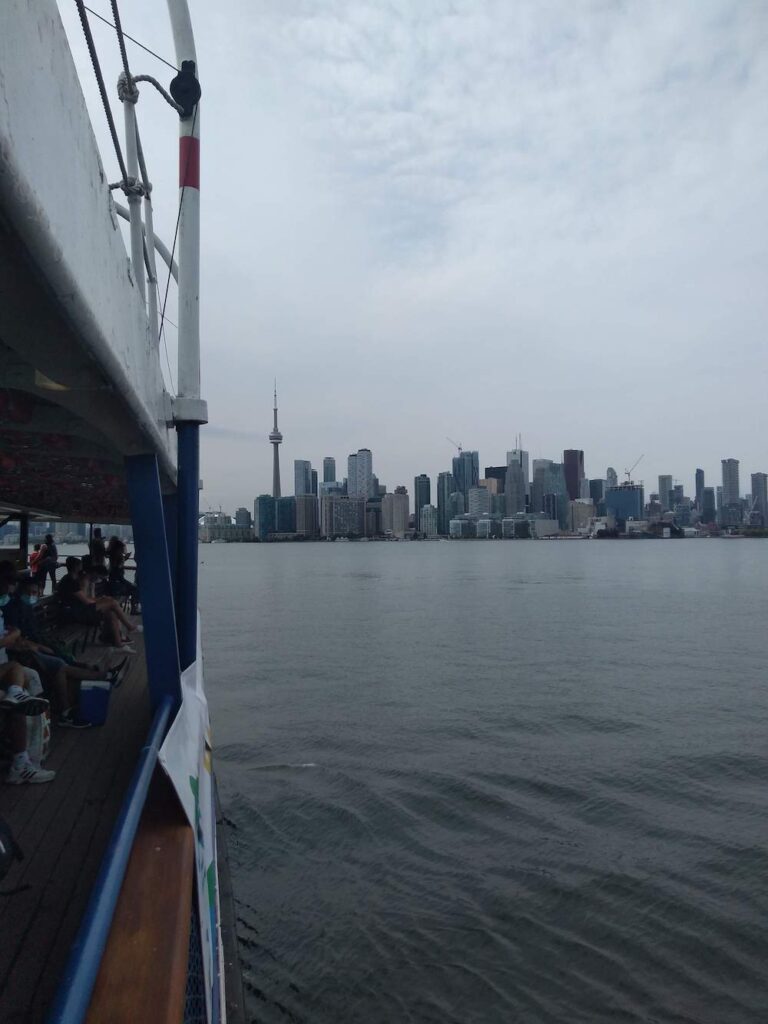
August 24, 2020
20 K
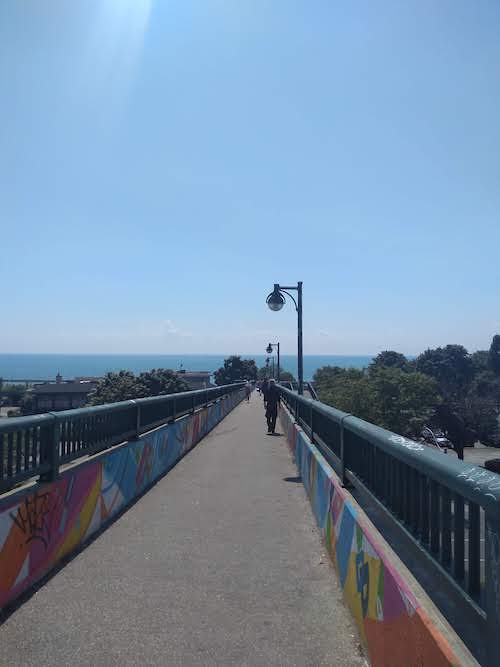
There are people who get off on pushing limits, on the intensity of winning, overcoming. I am not one of those people, which is part of the reason my children could not ride bicycles for years. The other part of the reason why my children could not ride bicycles for years was that they were really bad at it, and we were even worse at trying to teach them. We tried everything, but once one knew how to do it, the other one was struggling, and finally what it took in the end was a pandemic, for the world to be brought to a halt and my husband to be so frustrated by our situation that he taught our youngest to ride in an afternoon and had everyone’s bikes tuned up and ready to go in a space of a week.
And so we ride bikes now, out for ice cream, to the Korean grocery store, to Dufferin Grove Park. So when my cousin called me out of the blue yesterday and suggested we meet at Humber Bay Shores, way out in the west end, I decided we would ride bikes to get there. According to Google Maps, it was fifteen minutes quicker than transit.
But, dear reader, Google Maps LIED. As we made our way down Shaw Street to King, it occurred to me that a return trip in the other direction was going to be hard work (the problem when your entire city is built on a subtle slope). And then when we got to King and realized that not only were there no bike lanes, but that idiots roared along in their stupid cars like the street was a racetrack, we joined our children on the sidewalk. And as Liberty Village turned into Parkdale, the sun grew hotter, and it was around Dufferin Avenue that somebody started to cry.
But by then it was too late to turn back, and there was still so far to go. Why is there no shade in Parkdale? Why had we decided to make this journey on the hottest day of the year? Would our children ever forgive us as they furiously pedalled on their tiny single speed bikes that they’ve both outgrown already? How were we ever going to get home again, I wondered, as we persisted, the lake getting closer. We pointed it out at our first glimpse of it, but the children were too tired to care.
There is a ramp on the other side of the Roncesvalles Pedestrian Bridge, and Iris sailed down it on her bike and ran right into a wall. I chased after her, flinging my own bike to the ground impeding traffic, and feeling like I was going to throw up once I had reached her, because I was already tired, and it was so very hot. (Cheers to the kind man at the Palais Royale who offered to refill our water bottles…)
On the other side of the bridge, we at least got to ride on the waterfront trail, and the Lakeshore was closed to traffic, so there was relief in that. But even from Sunnyside to Humber Bay Shores was so far, and as we approached the slope of the Humber Foot Bridge, we all felt ready to fall to pieces. Maybe we were just going to live at Humber Bay Shores forever, I decided, collapsed in a heap on the concrete.
Fortunately, we had come to Humber Bay Shores to see my cousin and her family, a cousin who has been one of my dearest friends forever, and once we’d recovered our breath and stopped sweating, we spent a delightful two hours with them, and no one ever would have suggested that the journey wasn’t worth it.
But how to get home?
I decided we would cycle home along the Martin Goodman Trail on the lakefront, taking our time (it took 3 hours), stopping often to stick our feet in wading pools, to collapse under shady trees, and eventually even to order takeout from a sushi place which we ate in the Toronto Music Garden. I bought my children orange crush, a staple of my childhood but a curious artifact in theirs, and they were so excited. They definitely earned it. And then after sushi, we cycled just a little bit further, to the streetcar stop that would take us and our bikes right up Spadina Avenue, depositing us at the end of our street.
Which was kind of cheating, but even still, we cycled 20 kilometres, and it was terrible and awful and fun and amazing, and we were so proud of ourselves, and we never, ever want to do it again.
July 23, 2018
My favourite thing about living in a city

My favourite thing about living in a city is being able to disabuse myself of the notion that the place where I live is not a place where “something like this can happen.” To live in a city is to live in a place where anything can happen, which is actually the case with living anywhere, but in a city we know it by heart. It’s why I live in a city all all, and quite on purpose, because I want to live with my eyes wide open to the world and all its possibilities, even the terrible ones, because just because I can’t see them doesn’t mean they’re not there. And because I want to live in a place where I could never be fooled into thinking there’s just one narrative, that there are no contractions, that there are simple solutions. The world is tangled, and dirty, and gorgeous, and awful, and miraculous, and I take comfort in the ragged edges. In the darkest moments, I take comfort that the terrible stories will never be the whole story, that there will always be other stories. A city, like everything, can hold more than one reality. In fact, this is precisely what a city is for.
April 30, 2018
What Goes Around: Remembering Bill 160

I was a special kind of stupid in 1997, the kind you can really only be when you’re 18-years-old and you think things are simple. I think that was the year in which a more worldly classmate drew me a diagram to explain the political spectrum, because the only thing I knew was that once there were Nazis and that there hadn’t been communists since history ended a few years before. None of it seemed relevant. We weren’t political people. I knew that my grandparents voted NDP, because they always had a lawn sign, but we regarded that as an eccentric quirk, like a hat with cherries on a little old lady. I didn’t know the stakes of anything. I was in my final year of high school, and then our teachers went on strike, and for two weeks we had sleepovers every night, and it was also the first time I got drunk.
When the strike was over, I recall a couple of teachers expressing vague disappointment that more students hadn’t joined them on the picket lines, and I found this comment outrageous. We were students, I remember thinking, and we had no business choosing a side. A side in a conflict that, from where I stood, seemed abstract and complicated. I didn’t read the fine print. I don’t think I read any print. It was easier to be neutral. Politics is not my problem, I remember thinking. What’s my problem is that my school year is being disrupted, and all I care about is that the grown-ups work it out so that everything could get back to normal.
Somewhere out there exists a photo of a group of protesters in my town and I’m in the group holding up the placard that says, “We Are The Future: Listen to Us!” I don’t remember why I went to this event when I was so firmly committed to my neutrality (and also sleepovers and getting drunk) but I think it was some sort of student-organized thing at a union office and it was very exciting and romantic to be part of it. I’d never held a placard before. And now when I think about what was written on my placard, I definitely want to die, because for all my imploring of “Listen to Me/Us” I had absolutely nothing to say. A day in the life of a human vacuum.
The protests in 1997 were against the government’s Bill 160, which was to redefine how education was funded in Ontario. And while it’s doubtful I would have been swayed from my determined, “Don’t put me in the middle of this, bros!” stance, I wonder if something might have been different if I’d been tapped on the shoulder and respectfully told, “In twenty years, your children will be going to schools where the bathrooms are falling apart, where there aren’t custodians to sweep the floors, or education assistants to support a growing segment of the population with complex needs, the office is partly staffed by parent volunteers, and there will be a $15 billion backlog in school repairs.”
I joined the School Council at my children’s school in September, which has given me a window into what teachers and administrators are dealing with right now, and even just being in the school more often (like every day two weeks ago when I was doing admin work for a fundraising program) has informed my perspective. I’m thinking about John Snobelen, who was Minister of Education in 1997, and his comments about “manufacturing a crisis in education.” And, well, here we are, two decades later. As our Parent Council works harder and harder to fundraise and fill in gaps, as teachers exercise amazing feats of ingenuity to keep children learning in buildings that are crumbling and where resources are spare. The education funding formula does not serve anybody. The system, as it is, is not sustainable. And that Ontarians at this moment in time would be considering electing another Conservative government parading promises of spending cuts is such an absolute nightmare. It would be a disaster.
I’ve been thinking a lot about public schooling since September, about how it’s not a sexy cause, about how all the philanthropists who seem to be the only ones able to fund anything these days send their children to private school anyway so it’s not on their radar. How it’s abhorrent that the state of our education system is such a low priority for so many Ontarians. Just imagine the repercussions of the province not having made a serious investment in education for decades—or maybe we don’t have to imagine. I wonder about the cuts to educational assistants and how history might have been different if the perpetrator of the van attack in Toronto had received exemplary support during his school years. I’m thinking about the children who are growing up now and who will become our nurses, computer programmers, lawyers, surgeons, police officers, foresters, novelists, social workers, and engineers. I’m wondering about the effects of our children growing up in an inferior system where they’re made to understand that nobody with power thinks they deserve any better.
We were warned—that’s the worst part. There I was with my stupid neutral placard, and I wasn’t listening to anybody. Did I really think the teachers enjoyed their labour action? Full disclosure: there are always people who are never happier than when they’re taking labour action because it’s exciting and romantic, the way I felt when I was holding a placard, and those are the people who put a bad taste in my mouth regarding politics anyway, those who see politics themselves as an end rather than a means to the end…but I digress. It’s a preoccupation with these people that made me think that neutrality was a noble stance, when our teachers were so clearly right. They saw it coming.
I am absolutely ashamed now when I look back and realize I did nothing, and now my children (and your children!) are paying the price.
September 18, 2016
How to Make the Most of the Last Weekend of Summer, in 7 Easy Steps
Step 1) Assemble your squad.
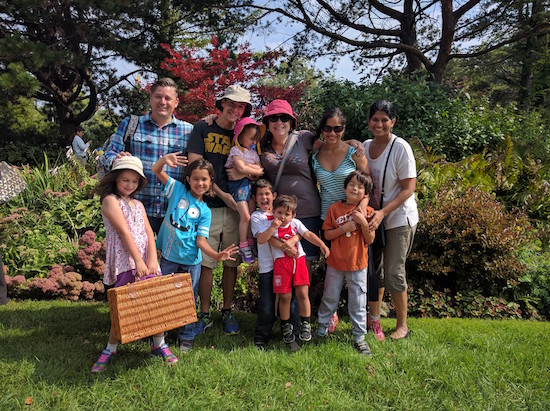
Step 2) Look out the window on the way.
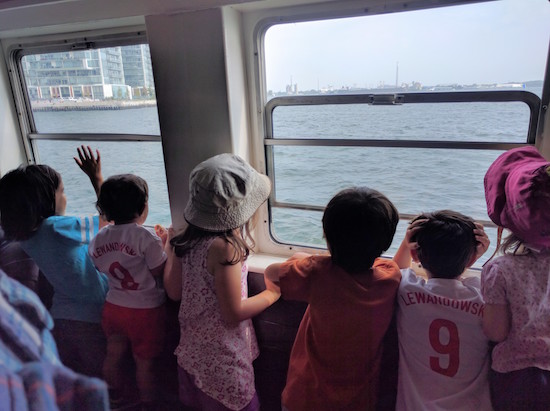
Step 3) Follow the rules.
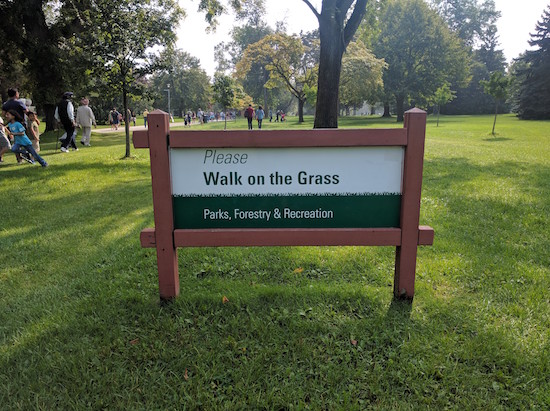
Step 4) Bring too much cake.
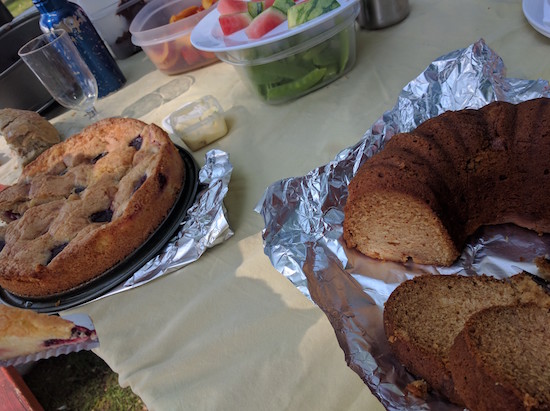
Step 5) Ride the highs and the lows.

Step 6) Remember to always stick together.
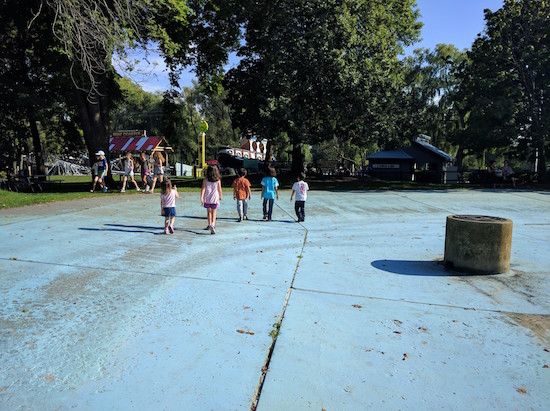
Step 7) Never forget the place you came from.
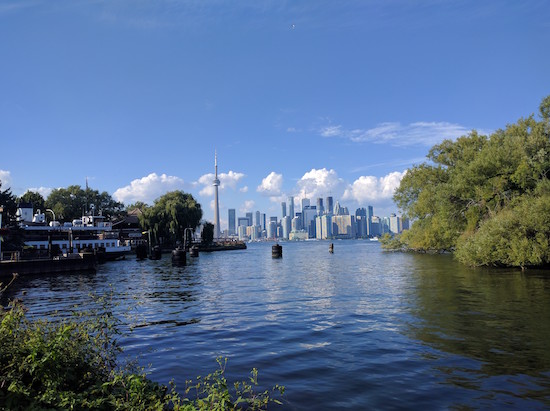
Step 7) Look up for the sunset.
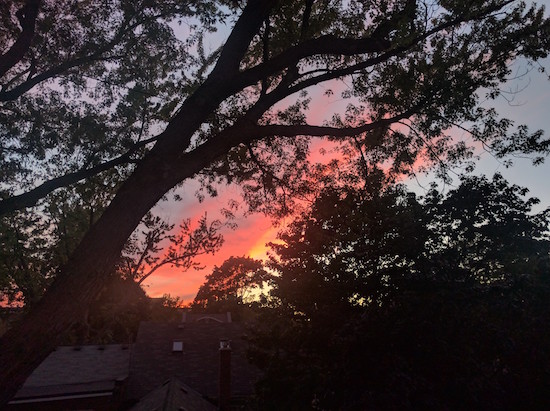
August 31, 2016
Extraordinary Day
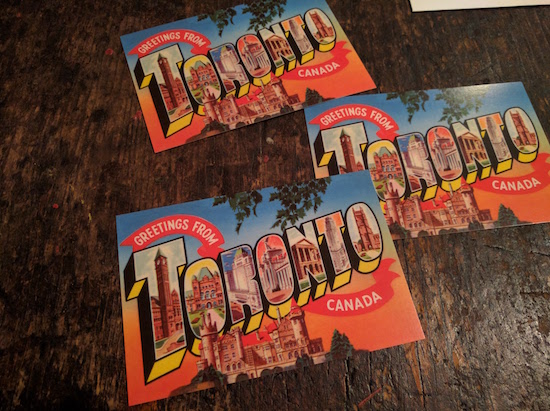
My favourite thing about being a parent is the way you get the make the world magic. The way you can wave an imaginary wand an transform an ordinary day into a extraordinary one. The way that my children had no idea what was up when we told them to get their shoes on at 8:30 this morning, and when they kept asking where we were going, we said they’d find out when they got there. They’d been expecting their daddy to leave for work as usual, but there we all were marching to the subway, south to Union. And then a walk along Front Street, and over the train tracks to the aquarium, because Harriet’s loves the aquarium, and had expressed a wish to go there again. There you go Harriet: wish granted. Amazing.
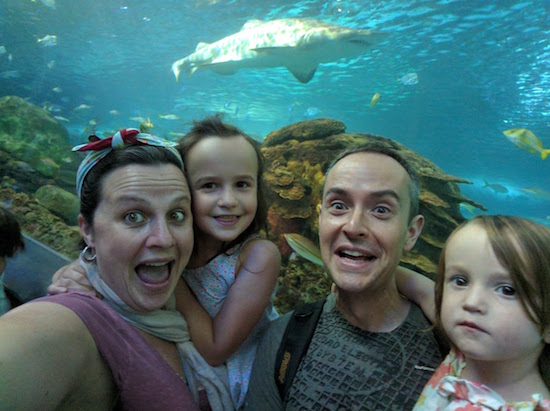
We had a terrific time at the aquarium, and the best part was when we ran into my best friend Jennie. After a few hours we were done though, and the place was completely bonkers, and so we left and meandered north to the place that had perhaps inspired this whole aquarium plan—the close-in-proximity, brand new Penguin Bookshop.
A bookstore that fits in your pocket, it is, or your closet, at least. Formerly a shoe repair kiosk. It features a lively selection of Penguin-branded goods and books they publish, Canadian and classic. I got the new Dave Eggers novel and The Bloody Chamber, by Angela Carter, and we bought a copy of Ooko because we’d had it from the library and loved it. It was very nice to finally stop by.
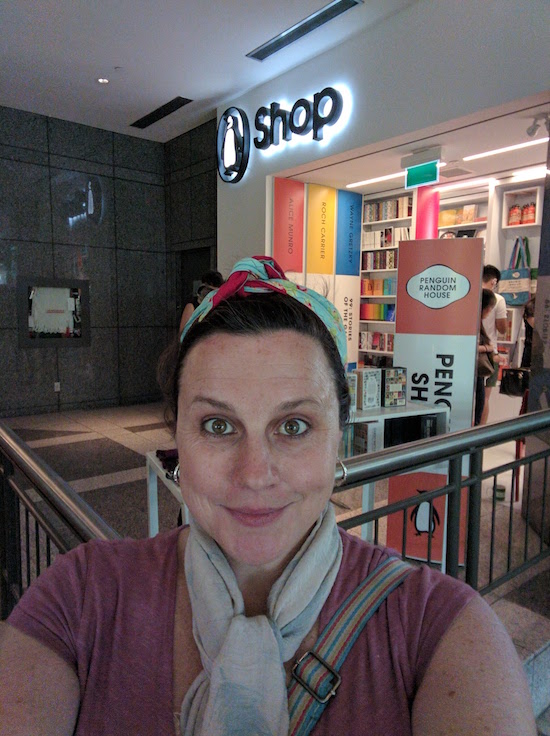
We had lunch at the Old Spaghetti Factory, which was completely fun, and totally not horrible or boring. And there was so much bread. The bad thing about being snobs who live downtown is that we don’t get free bread with our meals very often, and certainly not for lunch (and if we do, it’s spelt bread and nobody wants to eat it). The children thought the place was great and we thought it was surprisingly good, the perfect place to stop on this day of being tourists in our own city for a while.
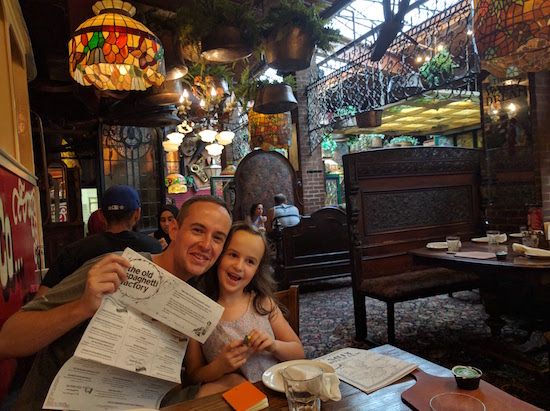
“And what are you doing with the rest of your day?” our waiter asked us as we paid our bill. “We’re going to visit Toronto’s First Post Office,” I told him. I told him, “You’ve probably been there a hundred times, right?” He gave me a look. When he finally bid us adieu, he said, “Have fun at the…post office.”
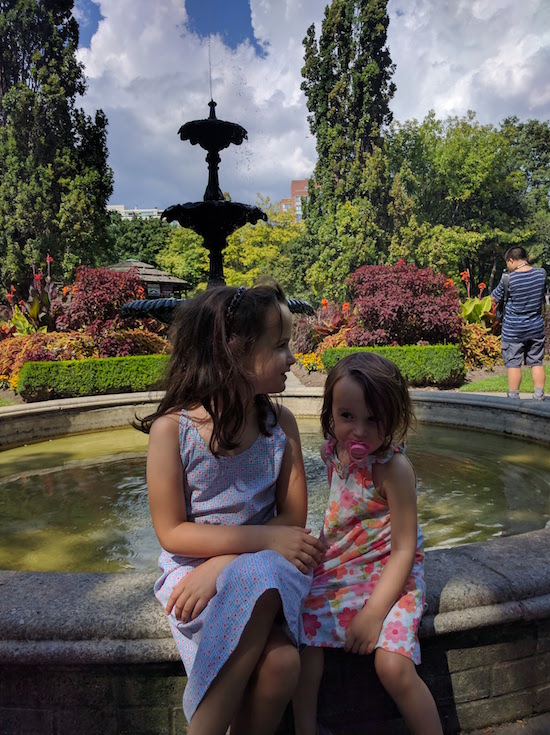
But not just any post office! It’s an actual working post office (and woo hoo! Canada Post and its employees have finally come to an agreement so we’re not going to be having a postal strike) AND a museum. From the restaurant, we walked through the beautiful St. Lawrence neighbourhood to get there, and finally arrived. Full disclosure, the children were being to lose their shit by this point.
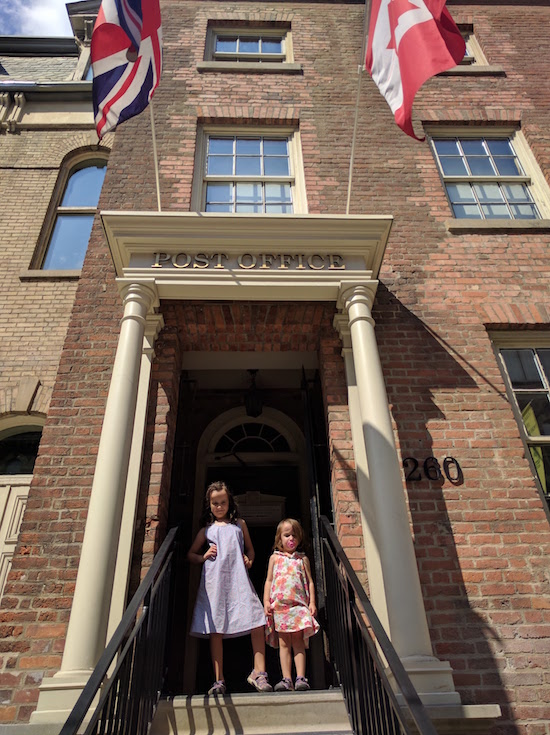
At Toronto’s First Post office you get to try writing with quills, and can also purchase stationary to write letters in their reading room. The place was marvellously busy, with tourists and also people coming in on ordinary errands. After finding out that writing with quills was really hard, Harriet and Iris sat down to write with ordinary pens, and they both ended up crying because a) over the summer Harriet had lost any writing skills she’d ever possessed and b) Iris had never possessed any anyway. And all I wanted to was write a letter to my friend, but the children were bananas and also doing dangerous deeds with ink, which ended up smeared all over Iris’s body, and then she blotted it with the sand provided for such things, and it all had gone a little bit awry. We pulled it together though, got letters written and even posted. And then it was time to admit that the day was coming to an end, so we headed for the subway, and nobody cried again, I think, so it all was a success.





